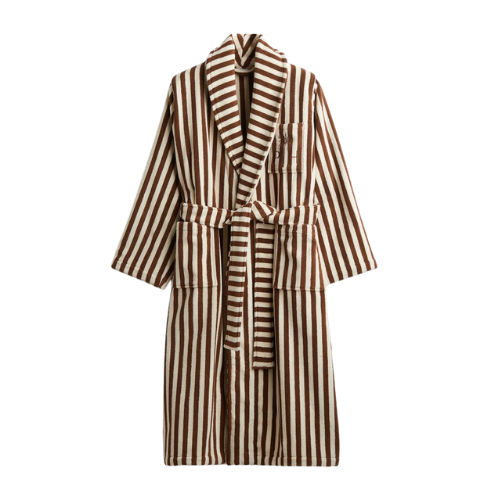Striped Tile Layouts Are Trending in Bathrooms — It's an Easy Way to Make Simple Tiles Look Amazing
Striped tiles seem to be the hottest tile layout this year, but is this a style classic, or more of a fleeting trend?

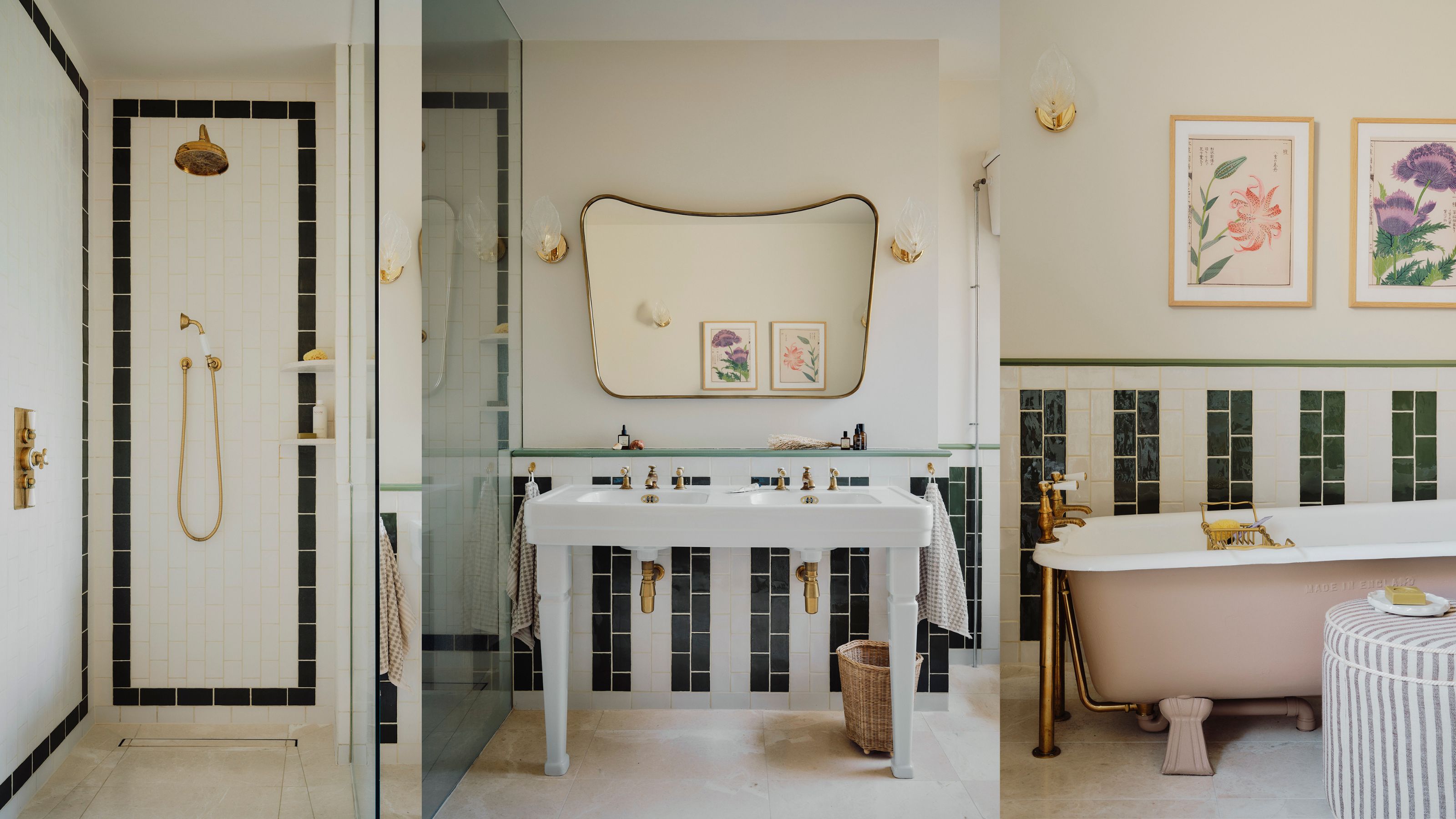
Stripes are an undeniable style classic. I mean, can you imagine a striped t-shirt ever going out of fashion? Neither could we. But it feels as if we've underutilized this much-loved print within interior design. Which is why we're always keen to see it popping up in designers' work, and we've just discovered our new favorite iteration: striped tiles.
While many bathroom tile trends can feel slightly intimidating or overwhelming, there's something comfortingly nostalgic about the look of a striped tile. But don't mistake this for meaning this style is boring or old-fashioned. In fact, to the contrary, this style is refreshingly modern, while maintaining a timeless appeal.
It's also surprisingly versatile. No matter the color or finish, this style can be adapted to suit a whole manner of different aesthetics. I spoke to the experts about their favorite ways to style this trend, and they are guaranteed to leave you feeling inspired.
Why Do the Experts Love Striped Tiling?
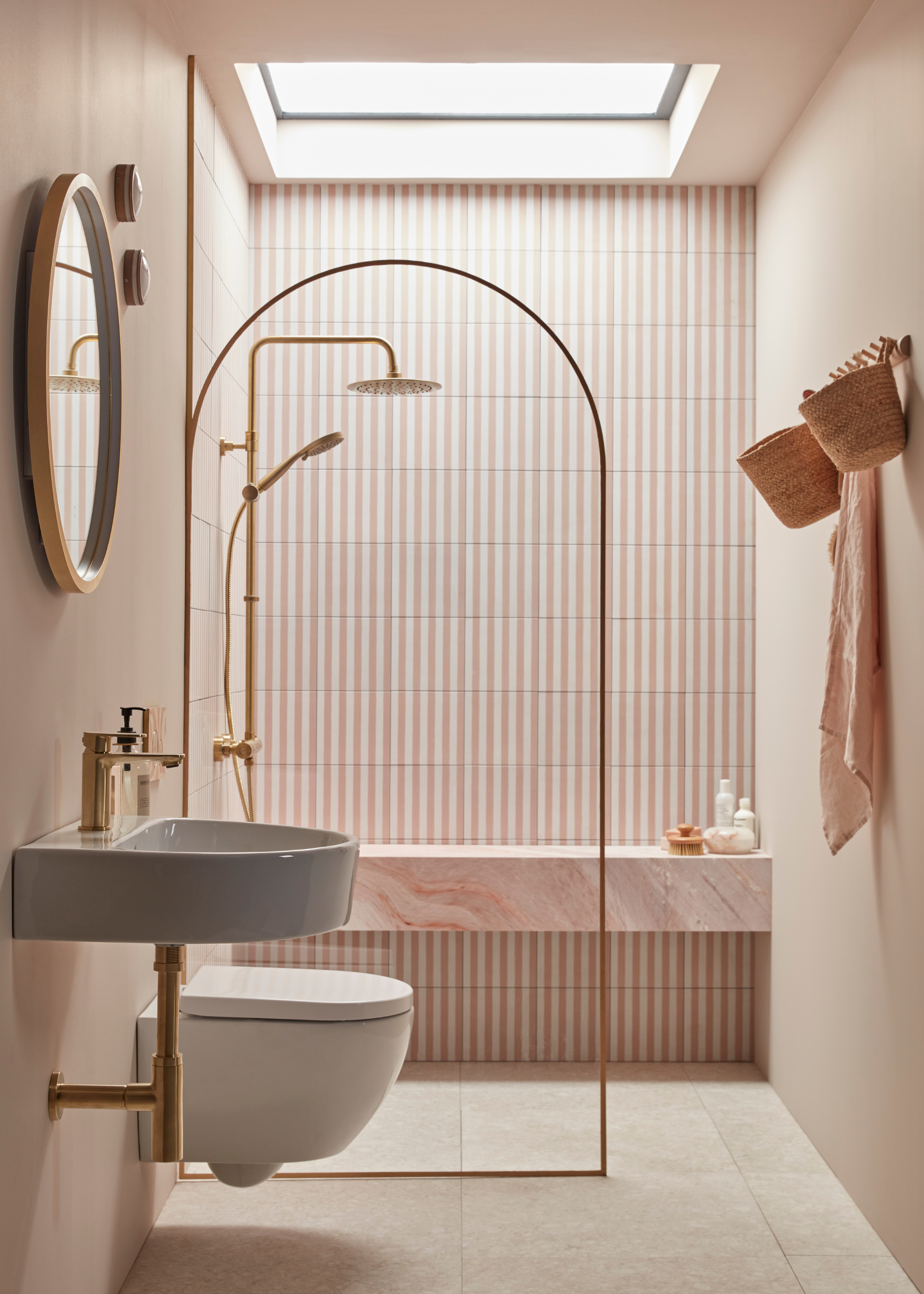
So, what is it about this trend that all our favorite designers and tile experts love so much? Well, to start, there is something undeniably fun about a stripe.
"Vertical, or even horizontal stripes, are such a fun way to add a little dynamism in projects. They create visual interest in two or three colour tones that can help anchor a whole scheme in kitchens, and particularly bathrooms, where a little more fun can often be had," explains Rob Whitaker, the creative director of Claybrook.
Part of this joyful energy comes from the nostalgic element of this design, triggering childhood memories of summer days and exciting excursions.
"Stripes bring back memories of circus tents, seaside deckchairs and light summer dresses; all evoking a positive and joyous feel through their two-tone impact," Rob comments.
The Livingetc newsletters are your inside source for what’s shaping interiors now - and what’s next. Discover trend forecasts, smart style ideas, and curated shopping inspiration that brings design to life. Subscribe today and stay ahead of the curve.
Joyful, yet somewhat simple, they are a minimalistic take on the popular dopamine decor style, ideal for those who want to bring some more fun to their interiors without it feeling overwhelming.
As Isabel Fernandez, director at Quorn Stone, says, "Stripes in interiors offer a decorative touch that speaks softly yet confidently. With this in mind, they are a modern neutral, bringing just enough interest while remaining classic in nature."
One of the main appeals of striped tiles is the effect they can have on your space, creating a visual illusion of increased height or width, depending on the layout of your tiles.
As Camilla Masi, from Otto Tiles, "Stripes are a brilliant way to bring movement and structure into a space. They can visually and quite dramatically alter the proportions of a room; horizontal stripes tend to make spaces feel wider and more expansive, while vertical stripes draw the eye upwards and create a sense of height and drama."
This is a fantastic tool for those with smaller bathrooms who are trying to create the illusion of more space.
Celine Erlam, lead designer at Indie and co, says, "It gives a sense of direction depending on the orientation of the stripe. It has visual interest and rhythm, and if you use contracting tiles, it can create a high-impact and modern aesthetic."
The founder of Indie&Co, Celine is an experienced interior designer with an instinctive sense for beauty, aesthetics, and authenticity. Her strengths lie in her extensive knowledge of materials, textiles, and trends, as well as her passion for environmentally conscious design.
How to Style Striped Tiles
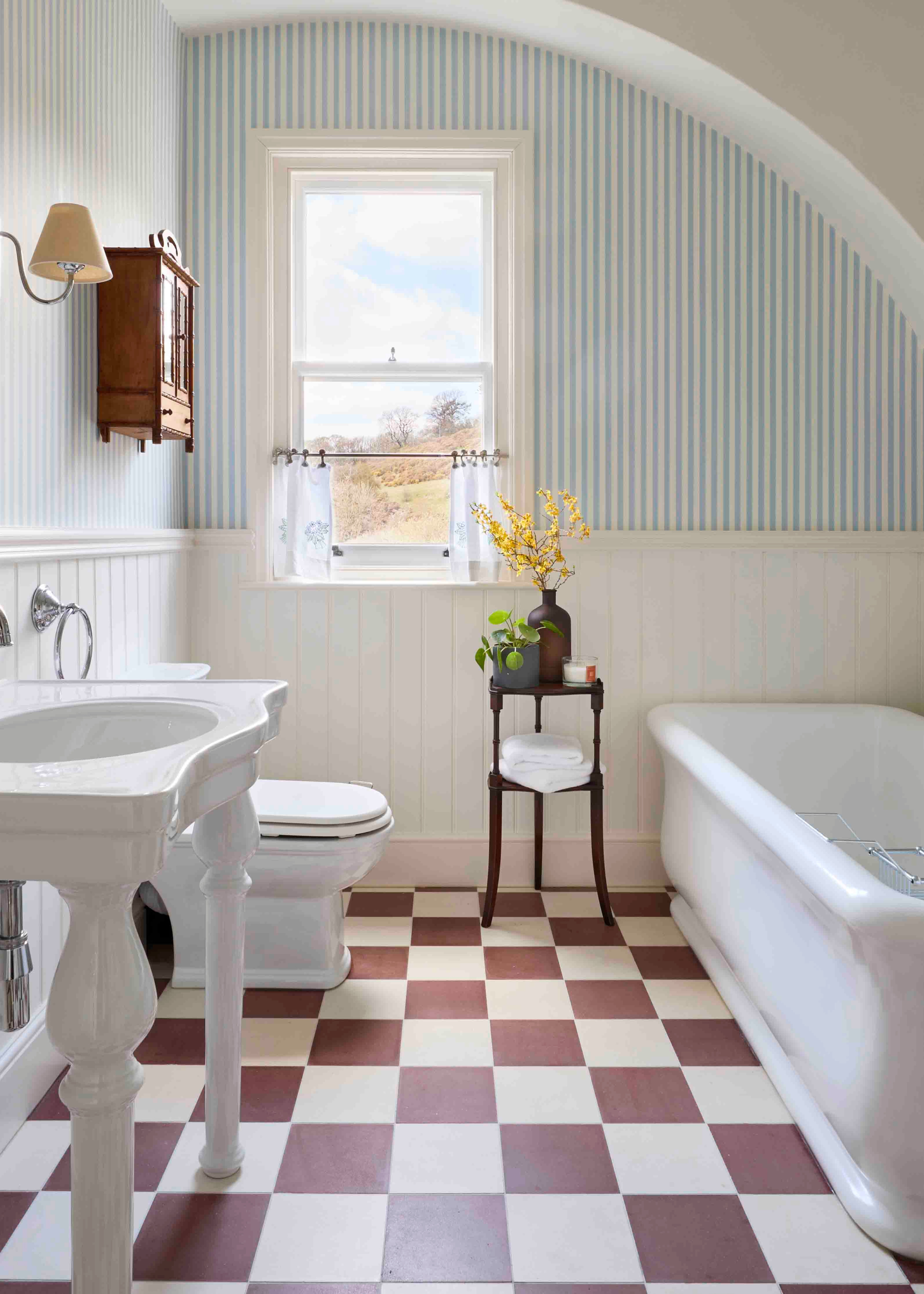
As Celine says, "Depending on color and material choice, a striped layout can be modern, classic, or even nautical."
While styling striped tiles may seem intimidating at first, with the right tricks, you'll quickly realize this look is surprisingly adaptable.
Grazzie Wilson, head of creative at Ca’ Pietra says, "The trick is in the styling: keep the rest simple and let the pattern do the talking. A bare plaster wall here, a brass fitting there, maybe a worn-in timber bench if you’re feeling rustic."
The classic feel of a stripe means that they look great with stripped-back, neutral color palettes.
"It depends on the color and design of the stripe to a degree, but as a rule of thumb, because striped tiling has such a strong visual sense presence, I’d usually balance it with more understated materials around it," recommends Camilla, "A natural palette which brings in plaster or limewash walls, brushed metals and timber joinery will help ground a space and stop a stripe feeling too busy."
Or, for a more striking look, Camilla suggests, "Alternatively, pairing a stripe with clean-lined fixtures and strong matte finishes helps the pattern feel more architectural. I also love the idea of mixing stripe directions, playing with a contrasting grout color, and using curved or rounded shapes elsewhere to soften the look."
Ultimately, getting this look right is all about balance. Ensuring the space doesn't feel busy or overwhelming, but relaxing and welcoming, instead.
Rob says, "As stripes can be quite impactful, it's normal to use a plainer tile for the floor to let the walls sing if the stripes are wall-focused, although some clients do run the stripes across both wall and floor for a truly wonderful decorative statement."
One of our favorite ways to style stripes, though, is by playing into the nautical aspect of the design and bringing some more coastal decor ideas into your space .
"The seaside quality of stripes does suggest some shabby chic propping and furniture, but if going to deeper and mellower tones like burgundy or warm sage, work in other hues like apricot and peach or creamy whites for contrast, alongside metallic finishes like brushed brass," continues Rob.
Otto Tiles & Design is a brand that has redefined the tile industry with its bold, handcrafted collections. Camilla is a multi-talented interior designer who brings the Italian touch and style. She helps to create striking spaces according to your taste.
What Type of Tiles Work Best for Striped Tiling?
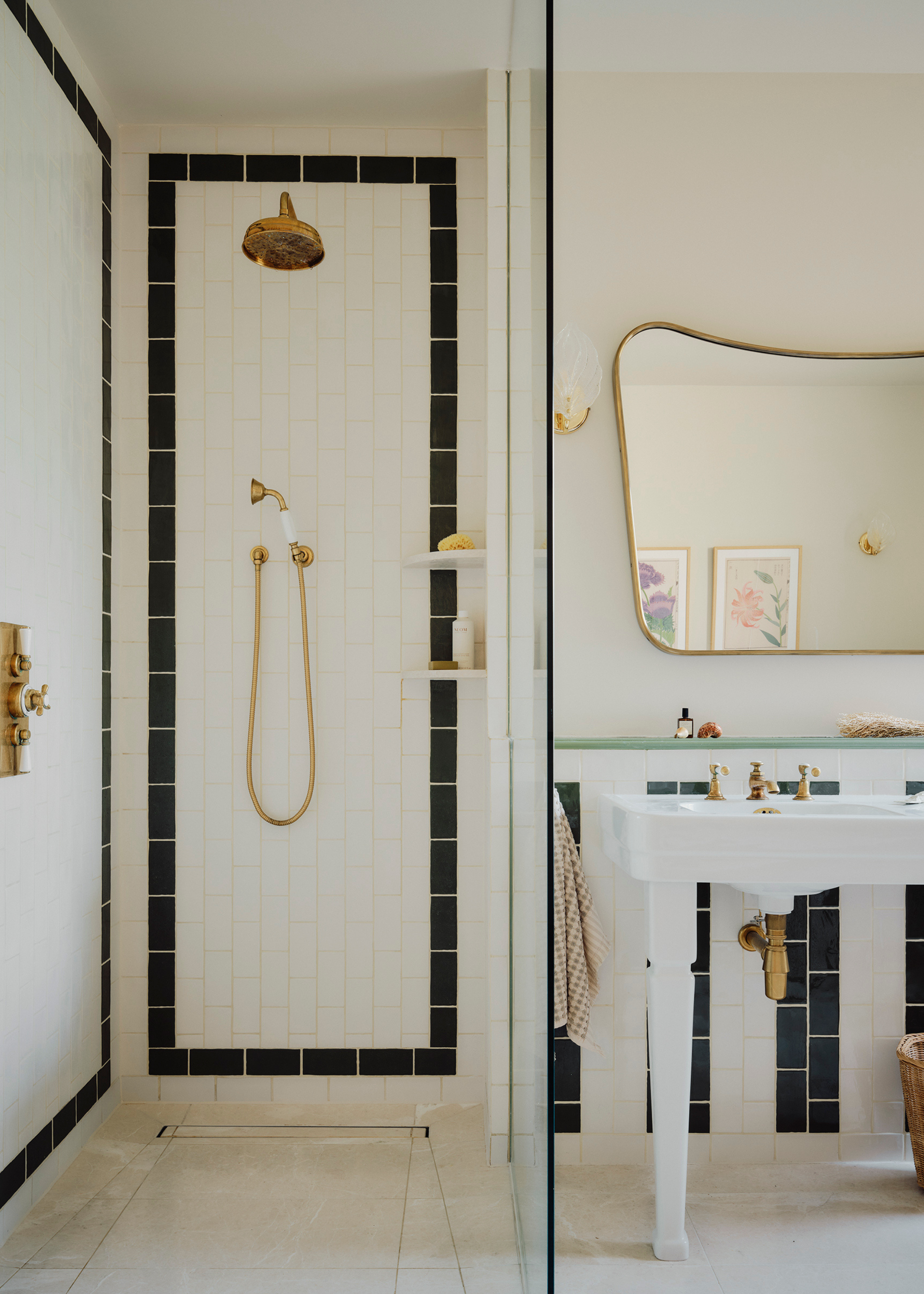
With so many different types of tiles on the market, it can be hard to decide which style and material will work best for this look. Luckily, the experts have plenty of tips for choosing the right ones.
"Glazed wall tiles come in myriad colours, and often have a reflective quality that suits the uplifting feel of stripes," says Rob. This reflective quality can also help to further the illusion of expanding your space.
Grazzie also favors this finish, saying, "Go for glazed ceramic or a dinky porcelain square with a touch of gloss; something that plays with the light and adds texture underfoot."
The colors you use will have a dramatic effect on the overall look of your striped tiles. For the most dramatic look, choose colors with a strong visual contrast.
"Alternating two tones, one lighter and one darker, is the key to creating these pretty stripy garden parasol looks, which are also reminiscent of Moroccan zellige style, particularly in green shades," comments Rob.
However, a softer, subtle difference in shade can create an equally beautiful, striking look.
As Camilla explains, "The stripe doesn’t always have to be stark, even subtle tonal changes can create a really beautiful effect. It’s all about choosing the right balance for the space."
In terms of material, Camilla says, "Zellige, bejmat, or cement tiles are my go-to for striped layouts. The handmade nature of these tiles, the subtle variation in tone and surface texture, adds so much character and depth to the stripe. With something like a factory-made ceramic, the finish is often too perfect, which can make the stripe look flat or overly harsh. I prefer when a stripe feels a little softer and more organic, less about precision, more about atmosphere."
While there's plenty of space to play around with your tiling types and colors, there is one rule that the experts recommend you stick with.
"The key is to have two different tiles of exactly the same size; you cannot bend this rule, and I would use the same finishes too, so either glazed or matt," says Celine.
Where to Avoid Using Striped Tiles?

While we love the striped tile trend, this doesn't mean it's the right choice for every room in your home.
As Rob explains, "Smaller spaces like a low-ceilinged downstairs loo may get a little overwhelmed with too much decoration, and perhaps it's best to stick to one tone rather than two or three, and focus on a pretty print on the curtains or an abstract floor design to take the emphasis off wall height."
Although stripes can make a small bathroom look larger, in cramped rooms, they can also make the space feel more suffocating.
Celine agrees, saying, "I think you need to create an impact, so I would avoid small areas such as cloakroom splashbacks or very small floor areas. To be effective, the stripes need to be repeated numerous times."
Equally, this style can get lost in larger spaces, where it's unable to make a significant impact.
"I’d probably avoid using strong, high-contrast stripes across very large surfaces, especially in open-plan rooms where there’s already a lot going on. It can start to feel overwhelming or visually noisy," says Camilla.
She continues, saying, "I'm also quite cautious about using them in period properties unless there’s a contemporary layer already in place; otherwise, they can sometimes jar with more traditional detailing. The key is to be intentional. Stripes need to have a reason for being there, rather than just being decorative."
If patterns aren't your thing, there are plenty of other tiling trends to get involved in. One of our favorites of this year has been tile drenching, an all-encompassing, striking style.

Maya Glantz is a Design Writer at Livingetc, covering all things bathrooms and kitchens. Her background in Art History informed her love of the aesthetic world, and she believes in the importance of finding beauty in the everyday. She recently graduated from City University with a Masters Degree in Magazine Journalism, during which she gained experience writing for various publications, including the Evening Standard. A lover of mid-century style, she can be found endlessly adding to her dream home Pinterest board.

